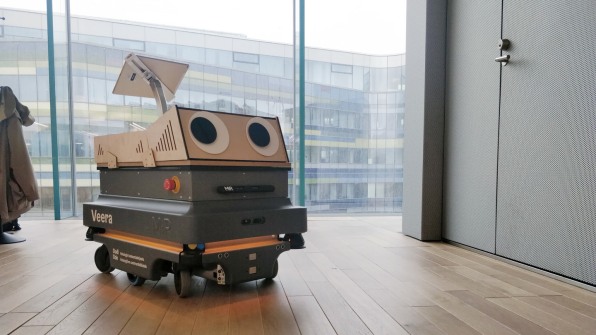by Katharine Schwab, Fastcompany, August 27, 2019
https://www.fastcompany.com/90395110/how-googly-eyes-solved-one-of-todays-trickiest-ux-problems
The central Oodi library in Helsinki, Finland brought in the digital consultancy Futurice to help it to transform some of its existing robots—which help move books between floors—into ‘bots that could help librarians with other tasks. The new robots perform a task that the humans universally hated: Showing customers where the fiction section is, or pointing them toward the bathrooms.
But there was a problem. As we were testing the robot, people weren’t relating to it as a social object. Some children were jumping on top of it, impeding it doing its job. The bot’s form—basically, a box on wheels—was simply too abstract for people to make sense of what it was and how they were supposed to interact with it.
To help people see the robot as a friendly helper, Futurice came up with a simple interface: Googly eyes.Googly eyes combined with sound and movement show the robot’s intent and express its state of being. Most importantly, the eyes are programmed to indicate the robot’s direction to customers, so they’re not caught unaware when it’s moving around. If it successfully led a person to the section they were searching for, its “emotions” would become more positive with high arousal, leading to the robot chirping happily. If it failed, its state would become more negative.
According to research on the subject, adding googly eyes to other objects has an impact on the way we think about them, too. In a study from 2012, researchers placed cartoon eyes on one donation bucket in a supermarket and left another without any eyes. Over the course of 11 weeks, 48% more people donated to the bucket with the googly eyes compared to the one without. Scientists think this happens in part because images of eyes make us we feel like we’re being watched, which means we’re more likely to feel pressure to volunteer for the good of the group.
This article explains how empathy and friendliness can bring communities together. I want to achieve a similar goal at Champion; making the kids and older adults feel like they have a common ground will be an important objective with my project. Perhaps this can be achieved through a mascot, characters, or simply friendly faces. This article also shows how slight modifications in the design of an object can radically change the user’s experience with it; the details are important.




